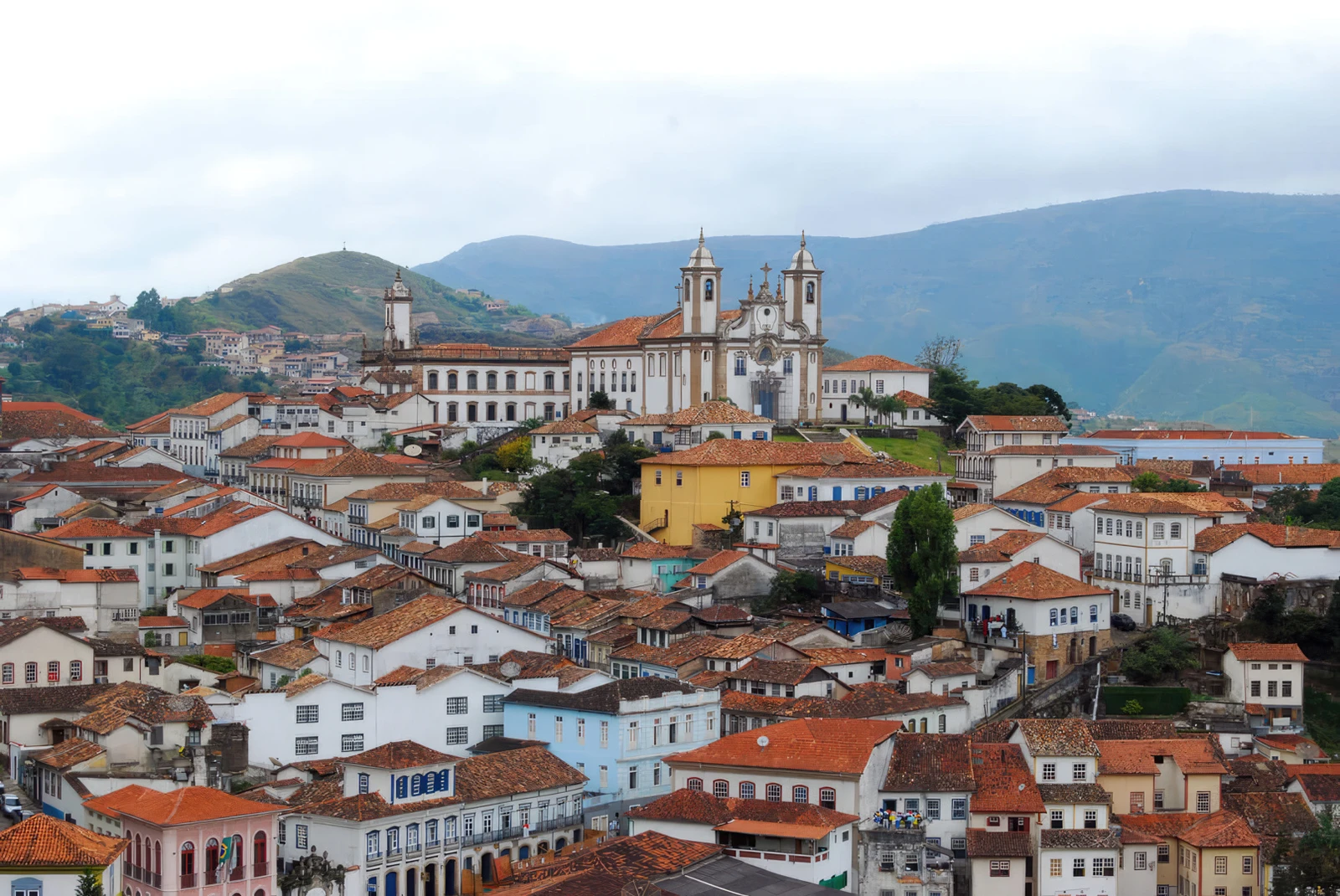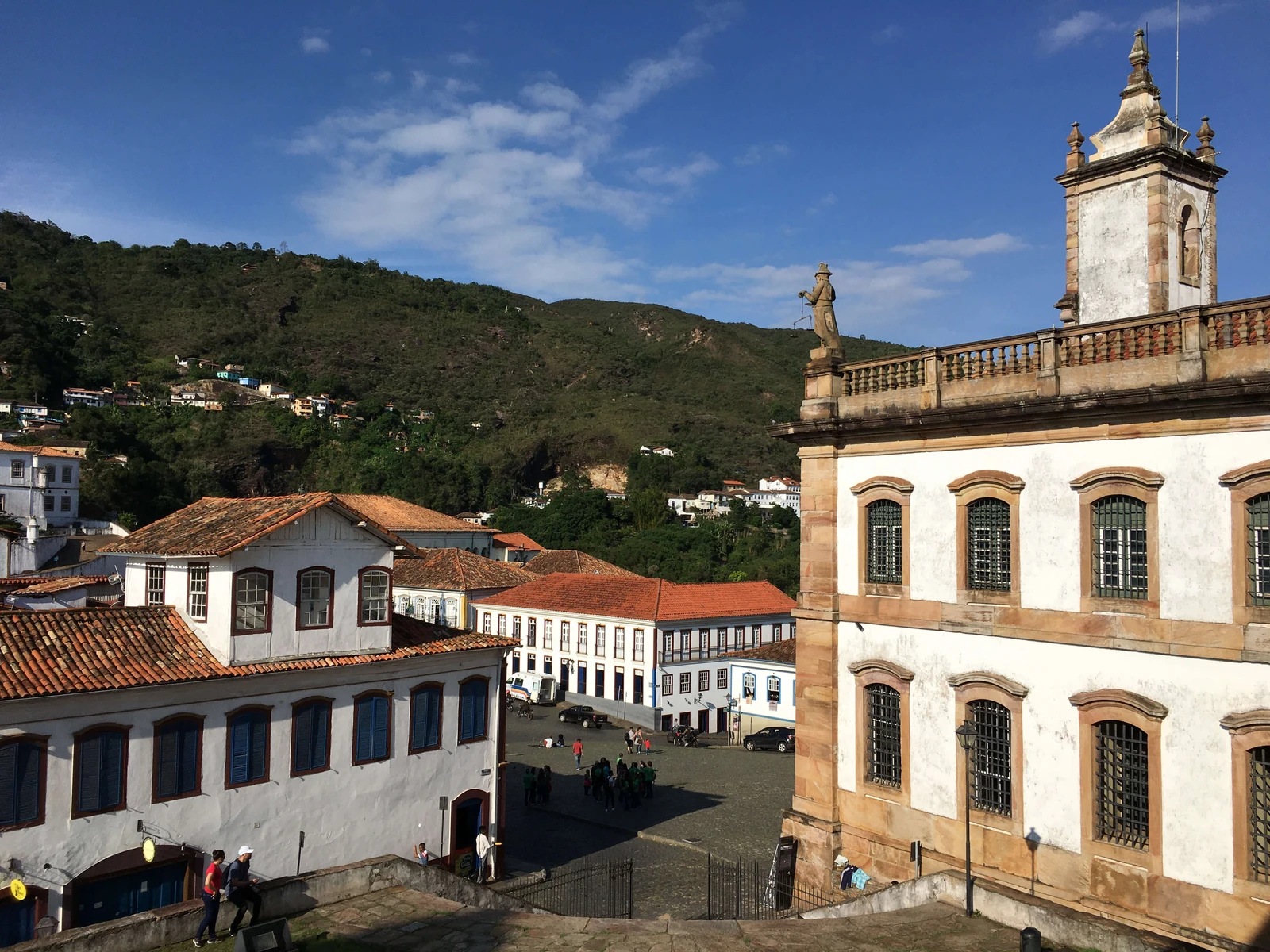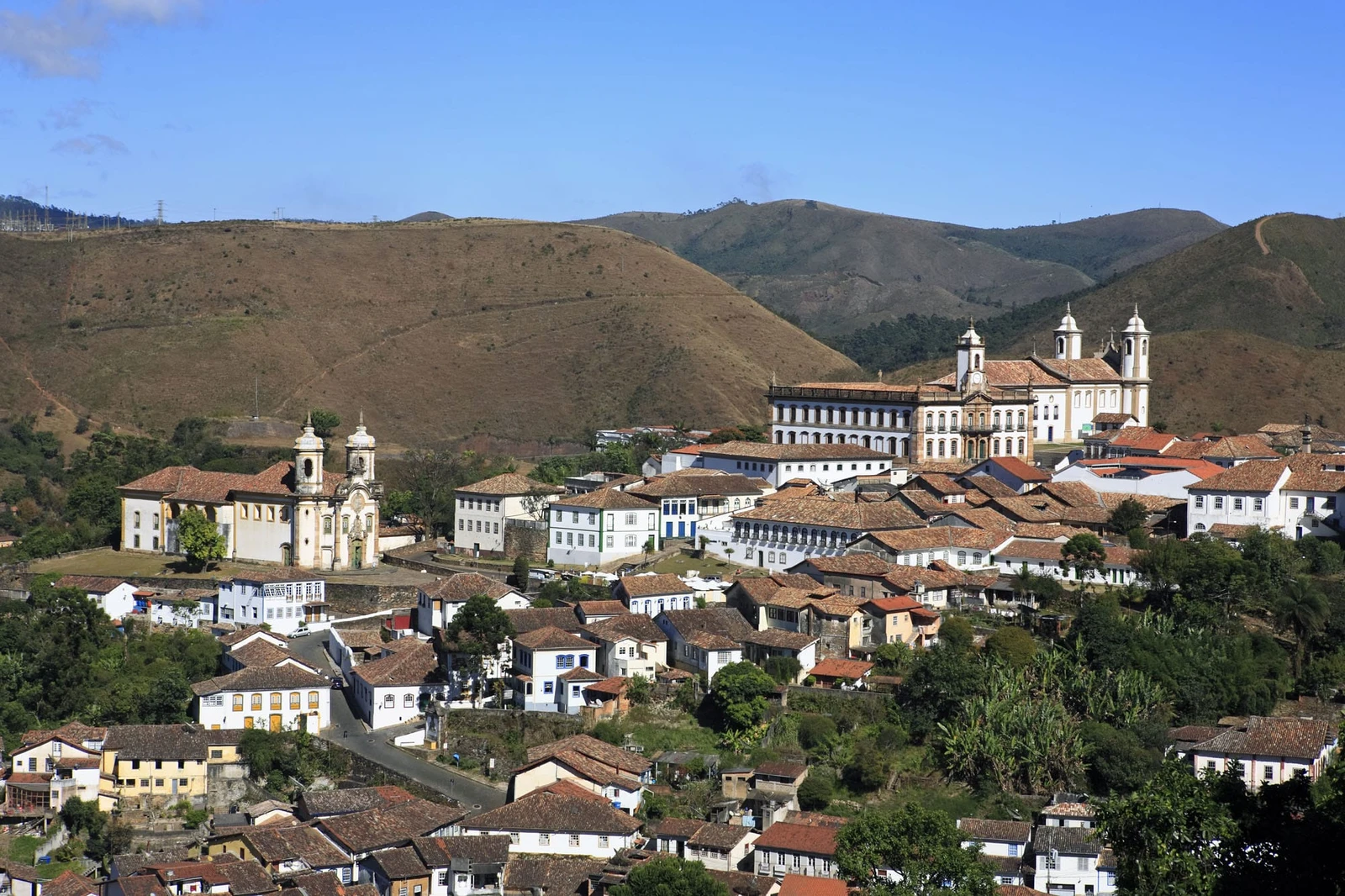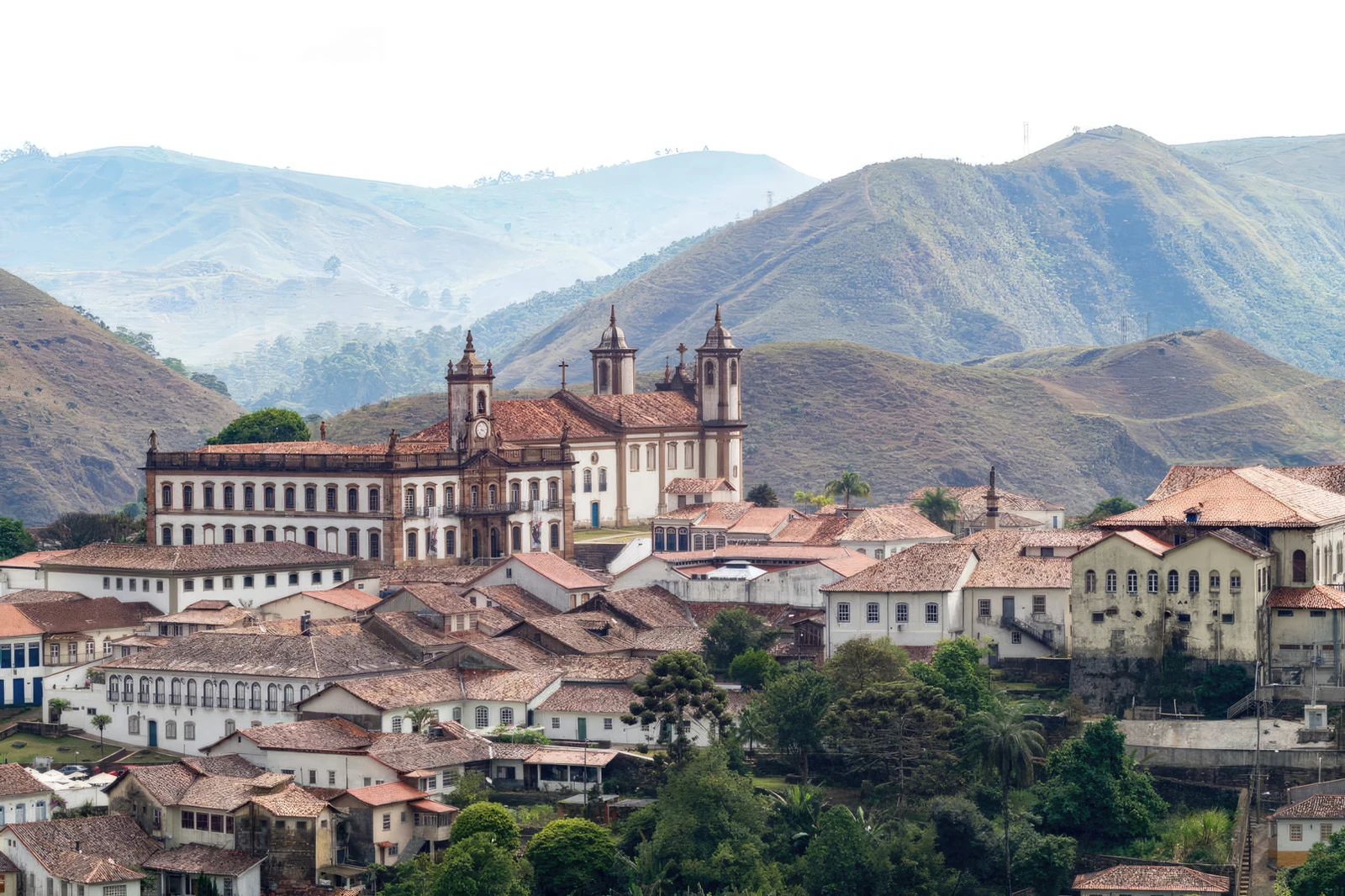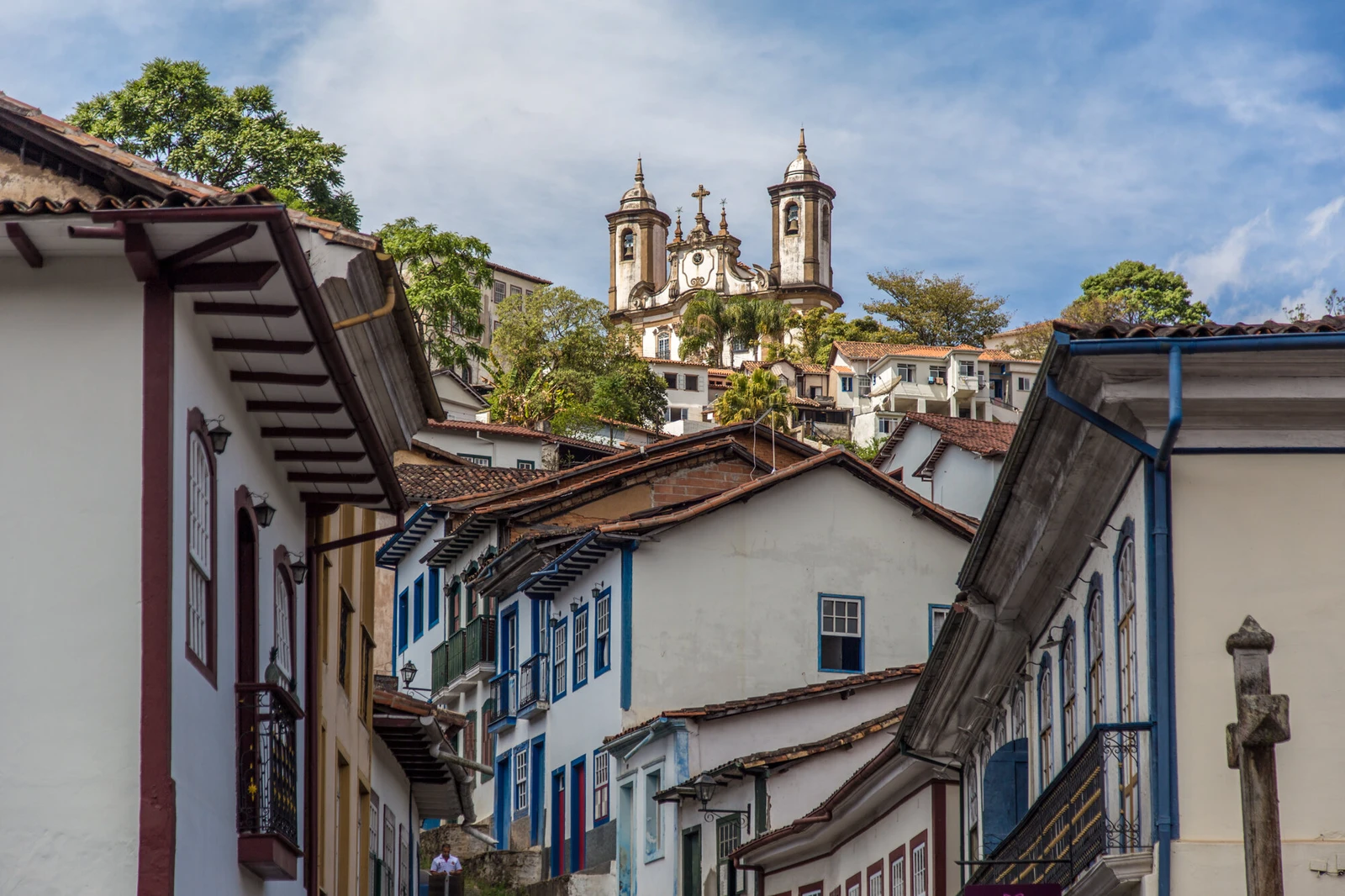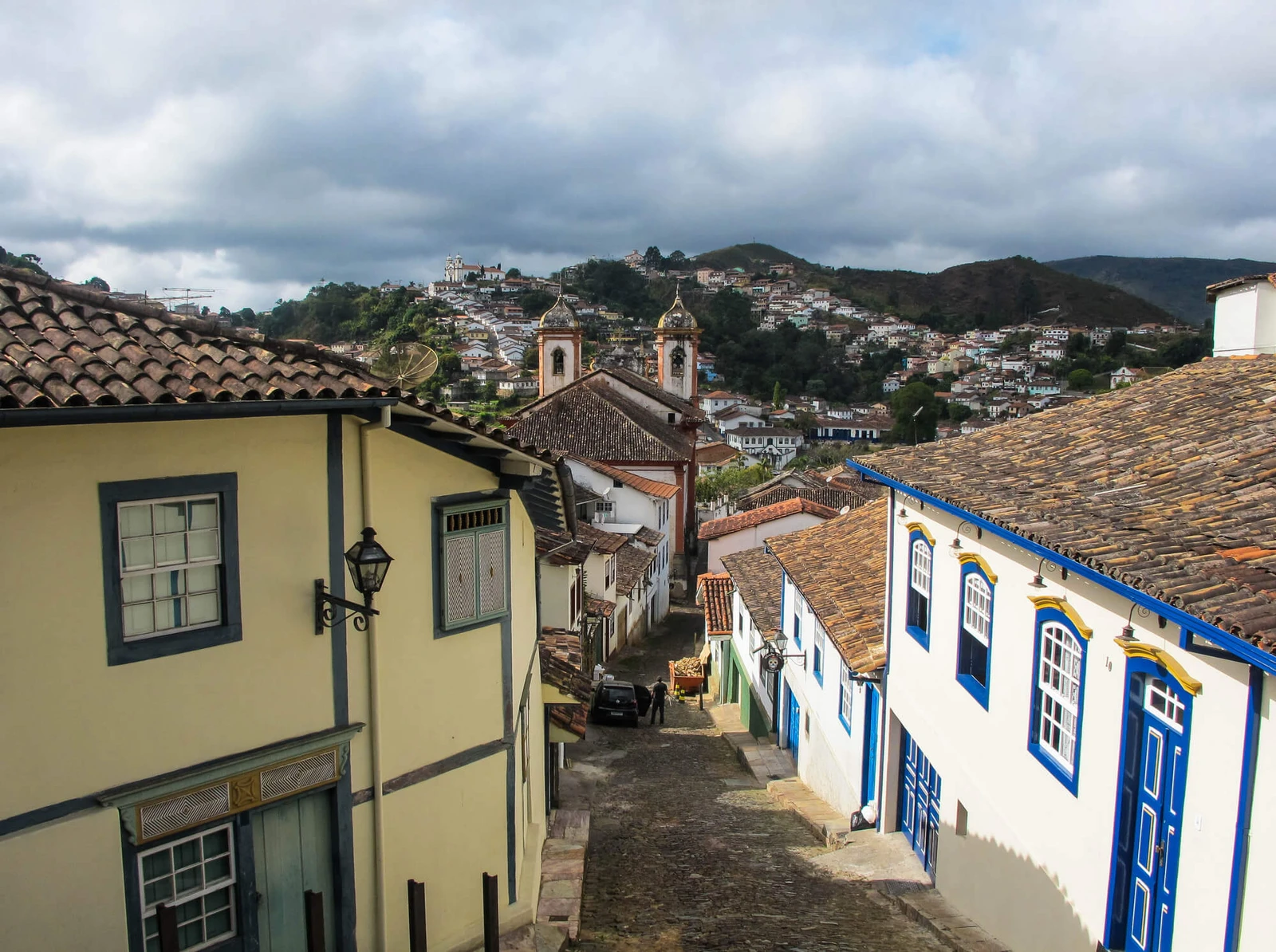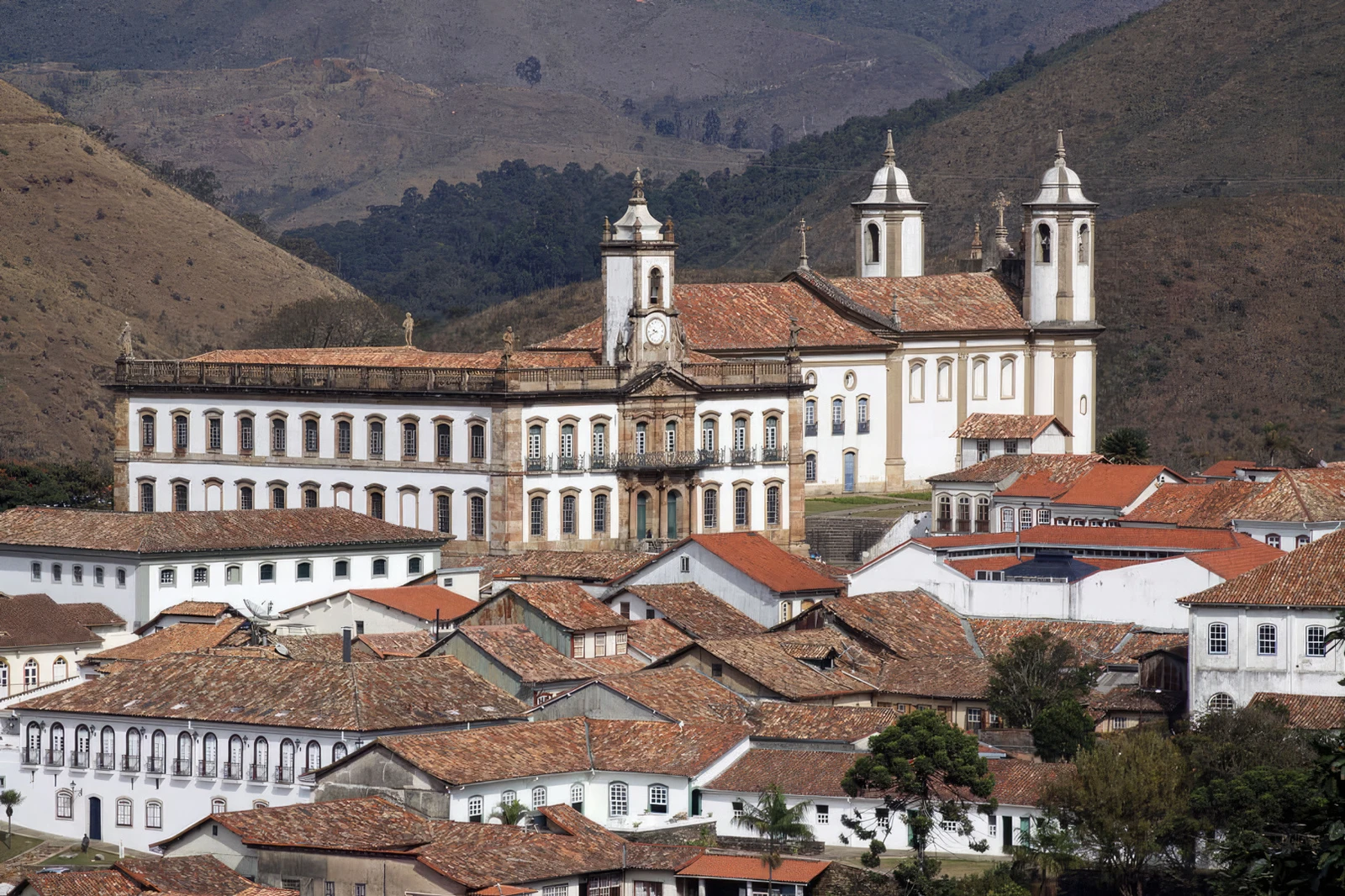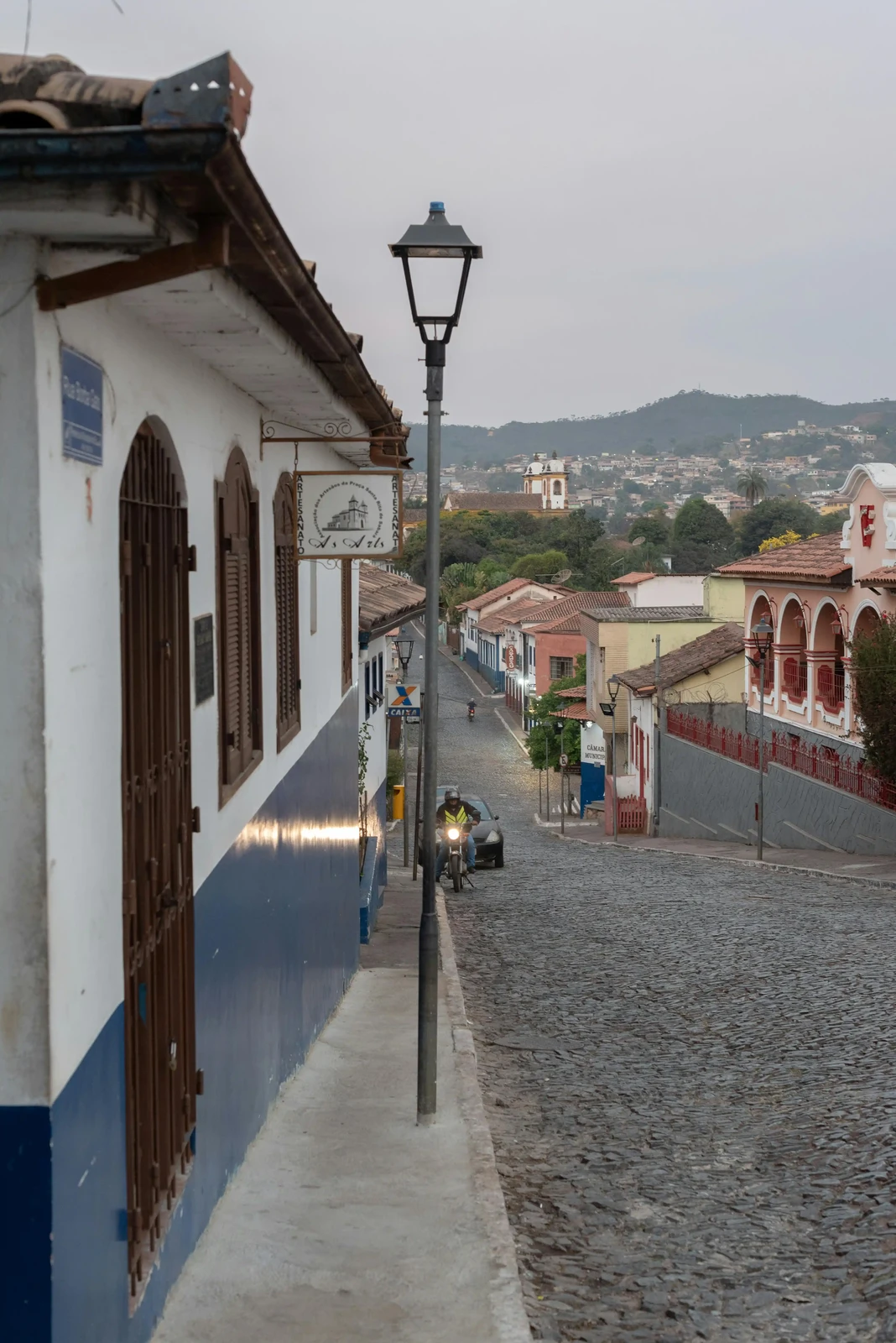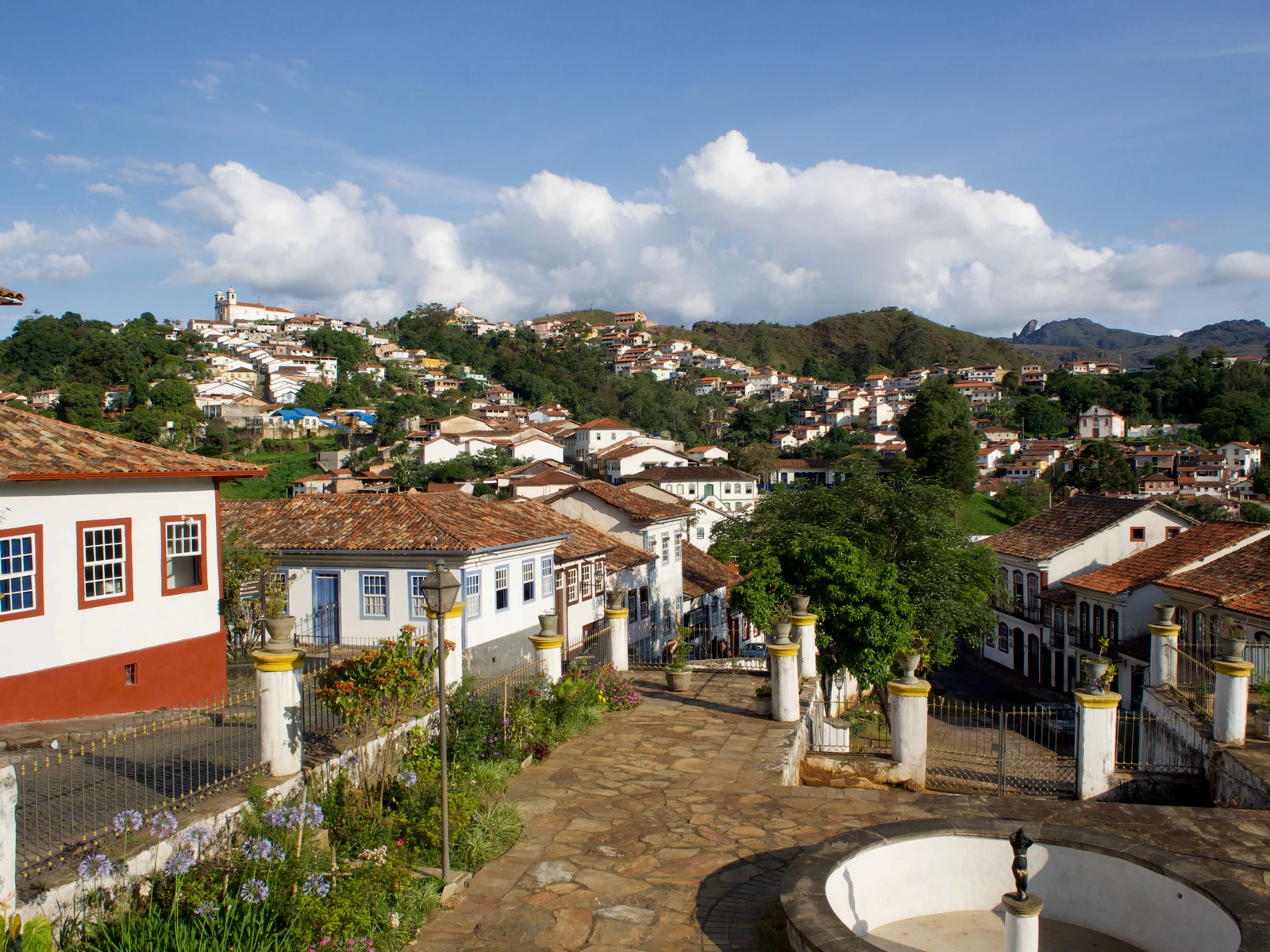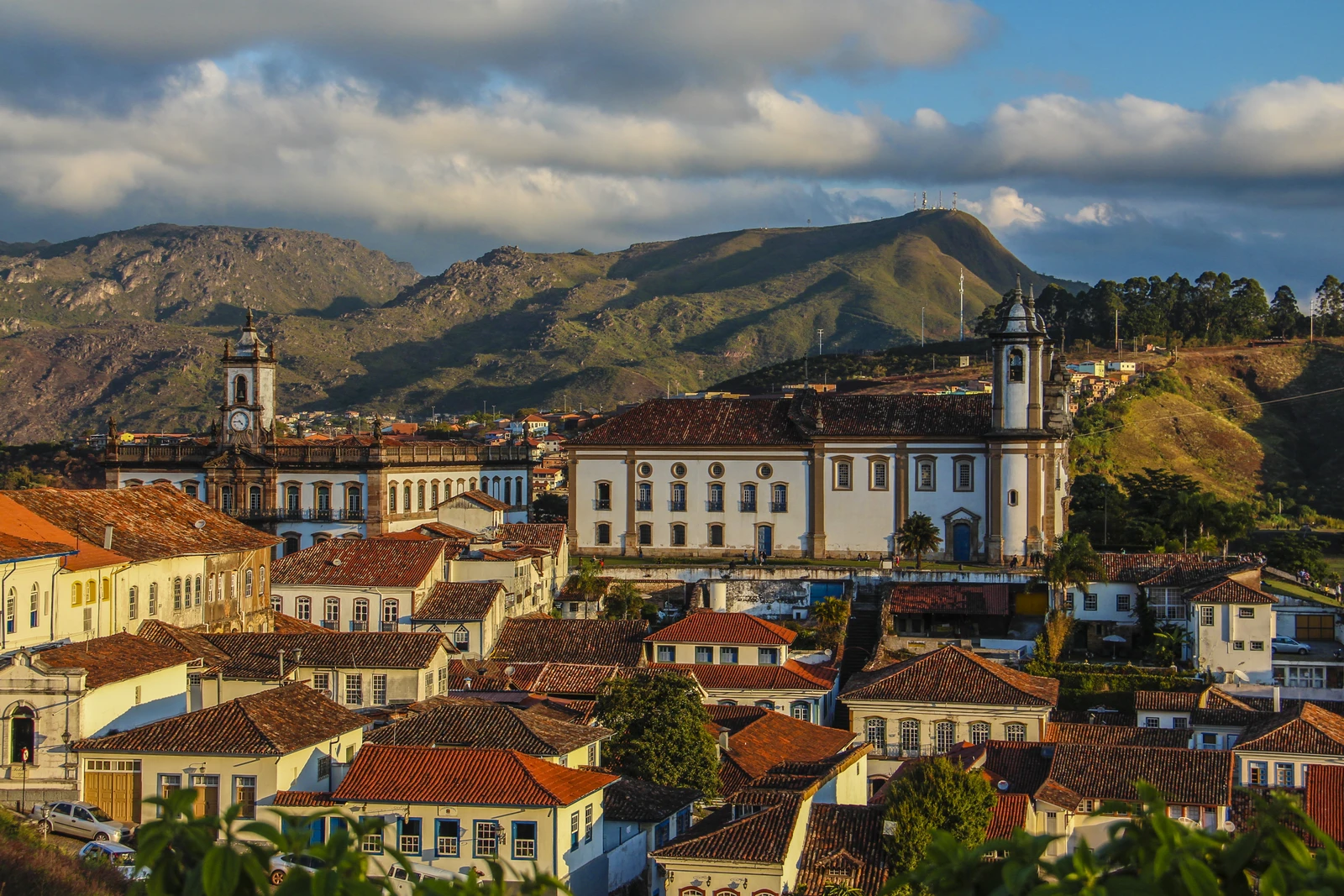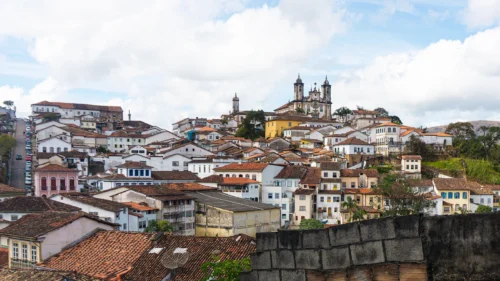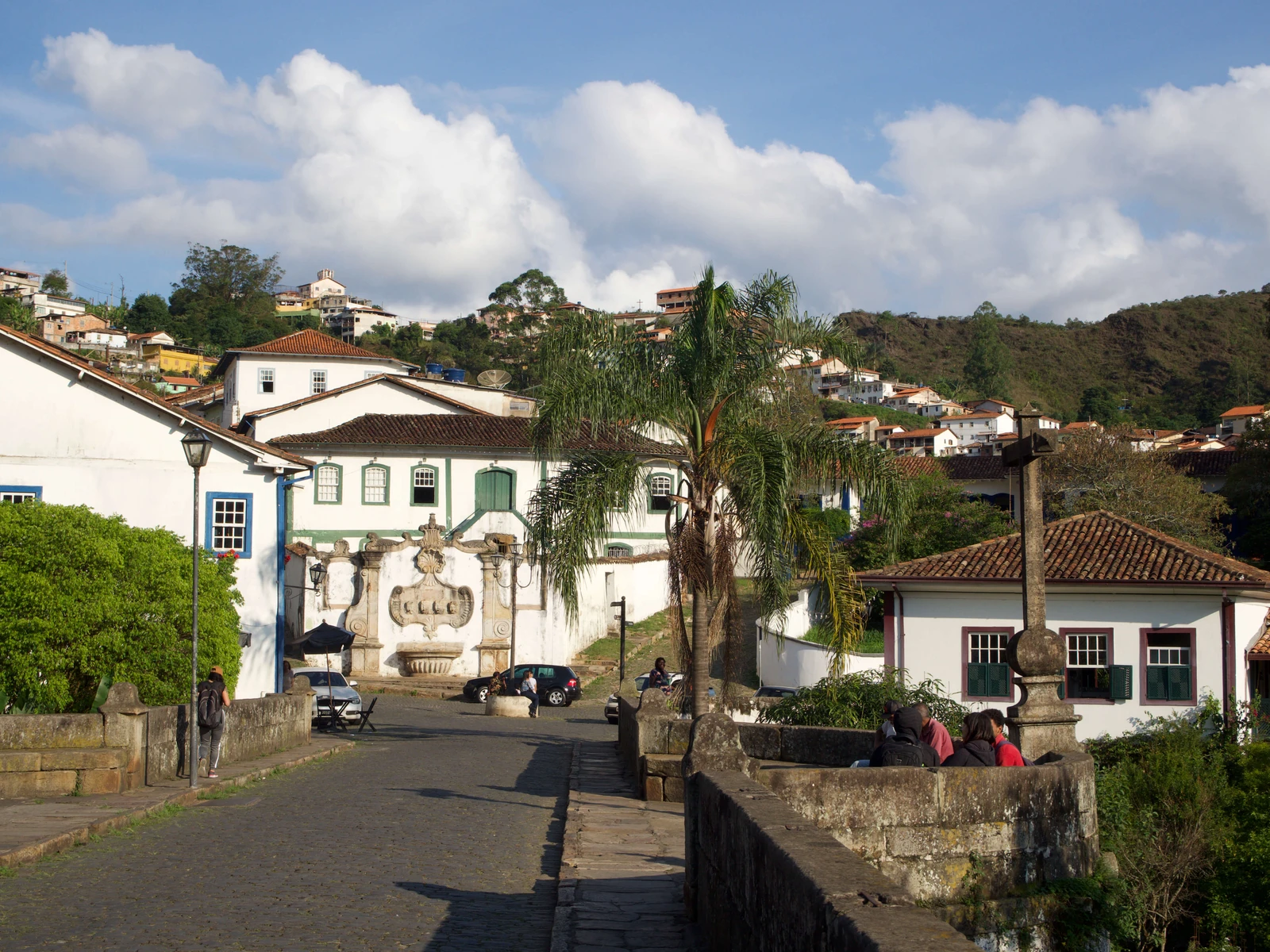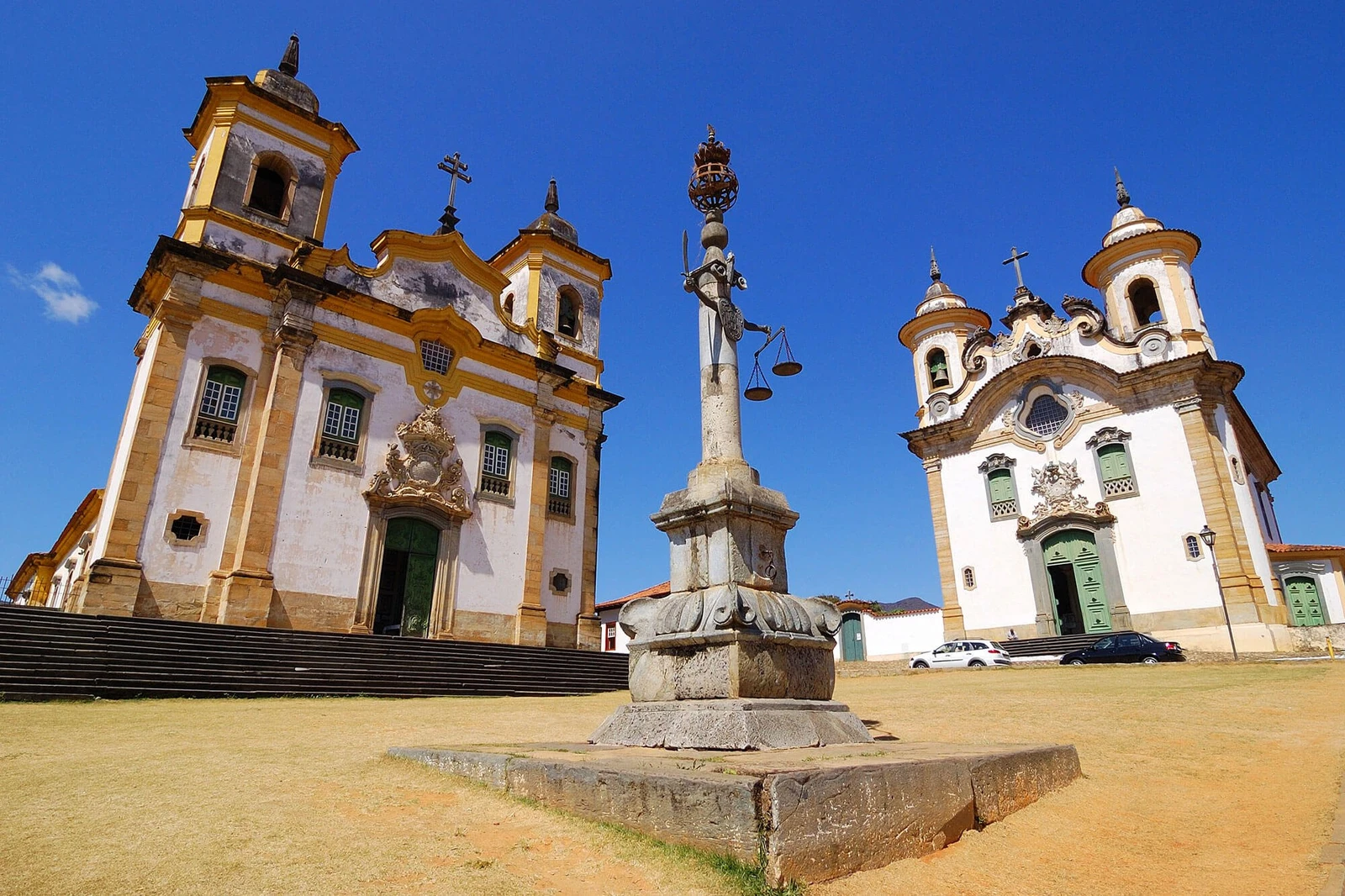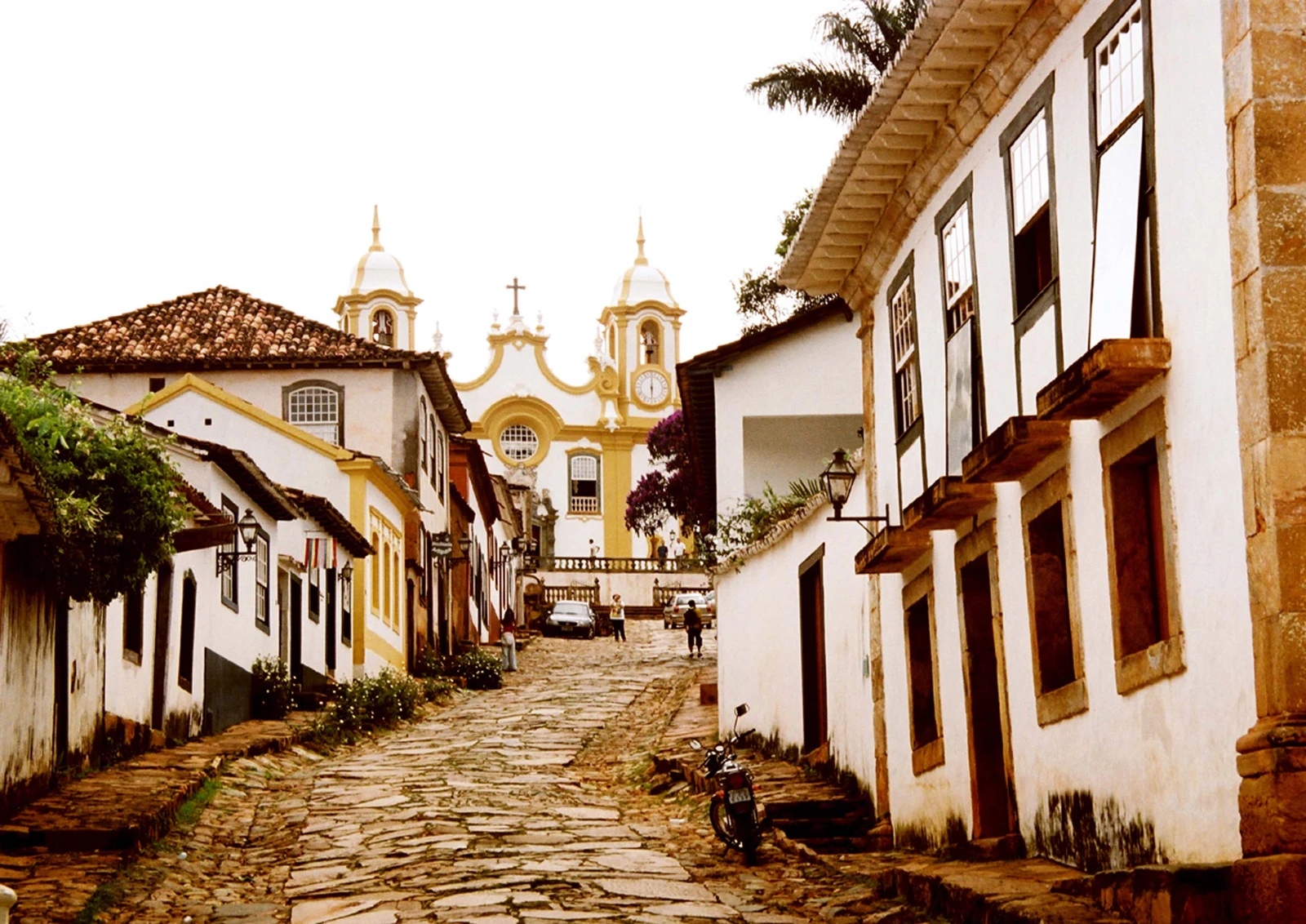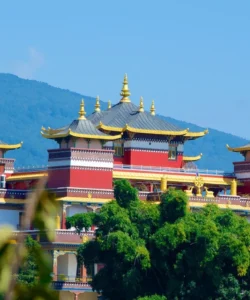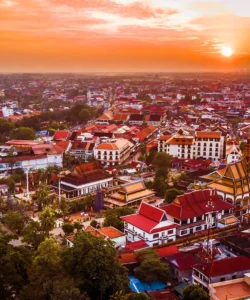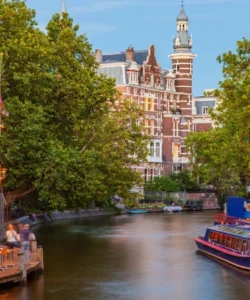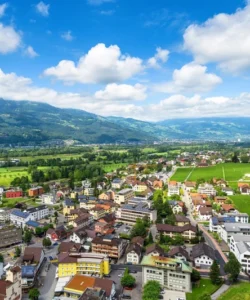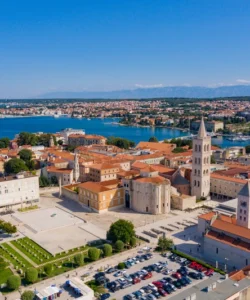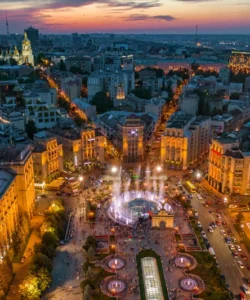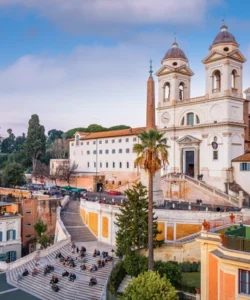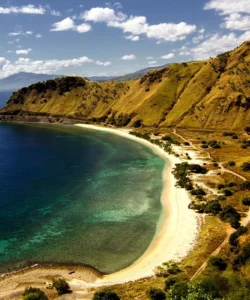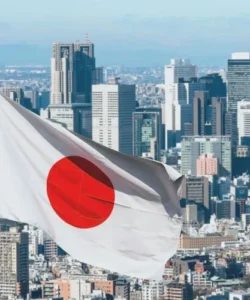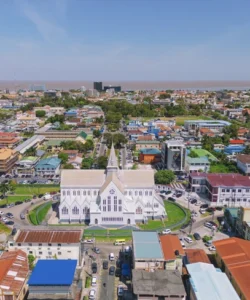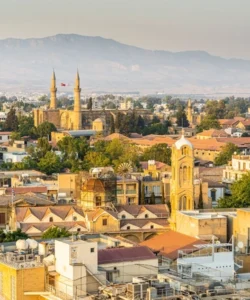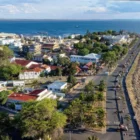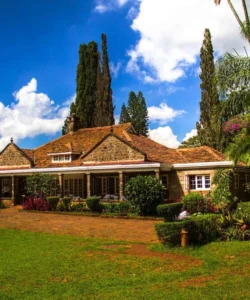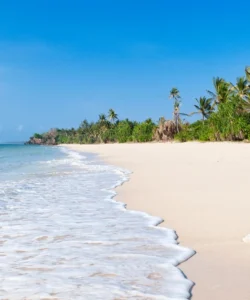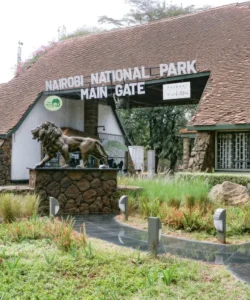The Historic Towns of Minas Gerais, particularly Ouro Preto, Mariana, Tiradentes, São João del-Rei, Congonhas, and Diamantina, are an unparalleled collection of colonial-era cities located in the mountainous state of Minas Gerais, Brazil. These towns blossomed during the 18th-century Gold Rush, becoming epicenters of immense wealth, which in turn funded a unique and exuberant style of Brazilian Baroque and Rococo art and architecture. A UNESCO World Heritage site (Ouro Preto and the Sanctuary of Bom Jesus do Congonhas are specifically listed), these living museums offer a captivating journey back in time, showcasing Brazil’s profound artistic and historical heritage.
Listen to an introduction about Historic Towns of Minas Gerais

Names:
- Ouro Preto (Black Gold) – UNESCO World Heritage site
- Mariana – First capital of Minas Gerais
- Tiradentes
- São João del-Rei
- Congonhas (specifically, the Sanctuary of Bom Jesus do Congonhas – UNESCO World Heritage site)
- Diamantina – UNESCO World Heritage site, famous for diamonds
Addresses: These are distinct towns spread across Minas Gerais state.
- Ouro Preto: Ouro Preto, Minas Gerais, Brazil.
- Congonhas: Congonhas, Minas Gerais, Brazil.
- Diamantina: Diamantina, Minas Gerais, Brazil.
How to get there:
Reaching the Historic Towns of Minas Gerais, involves a very long international journey to South America, followed by domestic travel within Brazil, often via Belo Horizonte:
- From Belo Horizonte to the Historic Towns:
- To Ouro Preto and Mariana: Take a direct bus from Belo Horizonte’s bus terminal. The journey to Ouro Preto is approximately 1.5-2 hours. Mariana is a short 20-minute bus ride or scenic tourist train ride from Ouro Preto.
- To Tiradentes and São João del-Rei: Buses connect Belo Horizonte to São João del-Rei (approx. 3-4 hours). Tiradentes is a short bus ride or steam train ride from São João del-Rei.
- To Congonhas: Buses from Belo Horizonte to Congonhas (approx. 1.5-2 hours).
- To Diamantina: Longer bus journeys (approx. 5-6 hours) or a combination of bus and private transfer from Belo Horizonte.
- Organized Tours: Many tour operators based in Belo Horizonte offer multi-day tours that cover several of these historic towns.
- Private Car/Taxi: Hiring a private car with a driver offers the most flexibility for exploring multiple towns.
Best Time to Visit:
The historic towns of Minas Gerais can be visited year-round.
- Dryer Season (April to September): Generally considered the best time, with cooler, drier weather (average 15-25°C / 60-77°F). This is ideal for walking the steep, cobblestone streets and exploring the outdoor sites.
- Wet Season (October to March): Can experience heavy rainfall, often in the afternoons, which can make the cobblestone streets slippery. However, the lush green landscapes are beautiful, and it’s less crowded.
- Local Festivals: These towns are famous for their vibrant religious festivals (especially during Holy Week and Christmas) and cultural events (e.g., film and gastronomy festivals in Tiradentes), which can be magical but also lead to large crowds and higher prices.
Landscape and Architecture:
The Historic Towns of Minas Gerais are renowned for their unique Brazilian Baroque and Rococo architecture, adapted to a rugged, mountainous landscape:
- Hilly, Undulating Terrain: The towns are dramatically set among rolling hills and steep slopes, particularly Ouro Preto, which is built on a series of ridges and valleys. This topography dictated the irregular urban planning and created unique perspectives for churches perched on hilltops.
- Cobblestone Streets: Narrow, winding, and often very steep cobblestone streets are a defining feature, adding to the colonial charm and challenging visitors’ footwear.
- Brazilian Baroque Churches (The Gold Standard): The primary architectural marvels. These churches are characterized by:
- Exuberant Decoration: Interiors are often dazzlingly ornate, with altars, pulpits, and ceilings covered in gold leaf (sometimes hundreds of kilograms of gold), intricate wood carvings (talha dourada), and colorful ceiling paintings (quadraturas).
- Sculptures by Aleijadinho: The undisputed master of Brazilian Baroque, Antônio Francisco Lisboa (Aleijadinho), contributed many of the most significant sculptural works, often in soapstone and wood, with highly expressive and emotive figures. His work is particularly prominent in Ouro Preto (Church of São Francisco de Assis), São João del-Rei, Tiradentes, and especially Congonhas (Sanctuary of Bom Jesus do Congonhas).
- Paintings by Mestre Ataíde: Manuel da Costa Ataíde (Mestre Ataíde) is famous for his vibrant ceiling paintings, creating a trompe l’oeil effect that seems to extend the church domes into the heavens.
- Unique Features: The absence of formal monasteries (due to a Portuguese Crown edict) led to the proliferation of brotherhood churches, often elaborately decorated by lay associations, showcasing a unique blend of religious devotion and local artistic expression.
- Colonial Mansions and Public Buildings: Well-preserved multi-story mansions (often with simple whitewashed facades contrasting with ornate interiors), former administrative buildings, and townhouses line the streets, reflecting the wealth of the mining era.
- Fountains and Bridges: Numerous decorative stone fountains and small stone bridges are integral parts of the urban landscape.
- Mineiro Cuisine: While not architecture, the traditional “Mineiro” cuisine, a rich and hearty comfort food, is a key cultural component of the experience, with many historic restaurants.
- Religious Processions: The towns maintain strong Catholic traditions, with frequent religious processions (especially during Holy Week) that bring the streets alive and showcase vibrant popular religiosity.
- Old Mines: Some former gold mines (e.g., Mina da Passagem near Mariana) are open for guided tours, offering a fascinating glimpse into the source of the colonial wealth.
What makes it famous:
The Historic Towns of Minas Gerais are famous for:
- Brazilian Baroque Art and Architecture: They are the premier showcase of the Brazilian Baroque style, particularly its unique blend of European influences with local materials and a distinct expressive quality, epitomized by the works of Aleijadinho and Mestre Ataíde.
- Gold Rush Legacy: They are the heartland of Brazil’s 18th-century Gold Rush, whose immense wealth fueled their construction and artistic splendor.
- UNESCO World Heritage Sites: Ouro Preto and the Sanctuary of Bom Jesus do Congonhas are specifically recognized by UNESCO for their outstanding universal value as testaments to human creative genius and the unique cultural exchange of the period. Diamantina is also a UNESCO site.
- Living History: The towns remain vibrant, inhabited communities, allowing visitors to immerse themselves in a tangible colonial past.
- Site of Brazilian Independence Movement: Ouro Preto was the symbolic center of the Inconfidência Mineira, an important early independence movement, giving it profound national historical significance.
- Unique Urban Planning: The irregular, organic street plans of some towns (like Ouro Preto) adapted to the hilly terrain are distinct from more rigid grid patterns of other colonial cities.
- Sacred Art and Religious Devotion: The concentration of highly decorated churches reflects a deep and enduring religious devotion.
Differences from some other wonders:
The Historic Towns of Minas Gerais distinguish themselves from other colonial towns (e.g., Historic Center of Salvador, Cartagena, Havana) in several key ways:
- Inland “Gold Rush” Origin: Unlike many colonial towns that were coastal ports (like Salvador, Cartagena, Paraty), the Minas Gerais towns were inland settlements that boomed specifically due to gold and diamond mining. This origin shaped their unique wealth, artistic output, and urban development, making them distinct from port cities.
- Brazilian Baroque Uniqueness: While other colonial towns in Latin America feature Baroque, Minas Gerais is the cradle of the Brazilian Baroque, characterized by the specific genius of Aleijadinho (his expressive soapstone sculptures are globally unique) and the lavish use of gold and intricate talha dourada that often completely covers interiors. This distinctive local artistic school is a key differentiator.
- Lack of Formal Monasteries: The Portuguese Crown’s edict prohibiting formal religious orders (Jesuits, Franciscans, Dominicans) in Minas Gerais led to a proliferation of wealthy brotherhood churches, often more exuberantly decorated than in other regions where powerful monastic orders built vast complexes. This unique religious landscape influenced the architecture.
- Topographical Integration: The dramatic and often extremely steep hilly terrain of many of these towns (especially Ouro Preto) profoundly influenced their irregular urban layout and the positioning of their churches, creating a distinct visual and walking experience compared to flatter colonial grid plans.
- Focus on Mining Wealth: The wealth that fueled the towns’ development came directly from the ground (gold, diamonds), rather than solely from agricultural produce (like sugar in Salvador) or trade, leading to a specific type of economic and social structure.
- Continued Authenticity and Local Life: Despite their historical significance and tourism, many of these towns (especially Tiradentes, São João del-Rei, Mariana) maintain a strong sense of local life and authenticity, often less overtly tourist-centric than some larger, more famous colonial centers.
In essence, the Historic Towns of Minas Gerais are a magnificent and highly distinctive wonder, a resplendent legacy of Brazil’s golden age, offering an unparalleled journey into the heart of its unique Baroque artistry, its rich mining history, and its enduring cultural traditions, all set within a dramatic mountain landscape.

